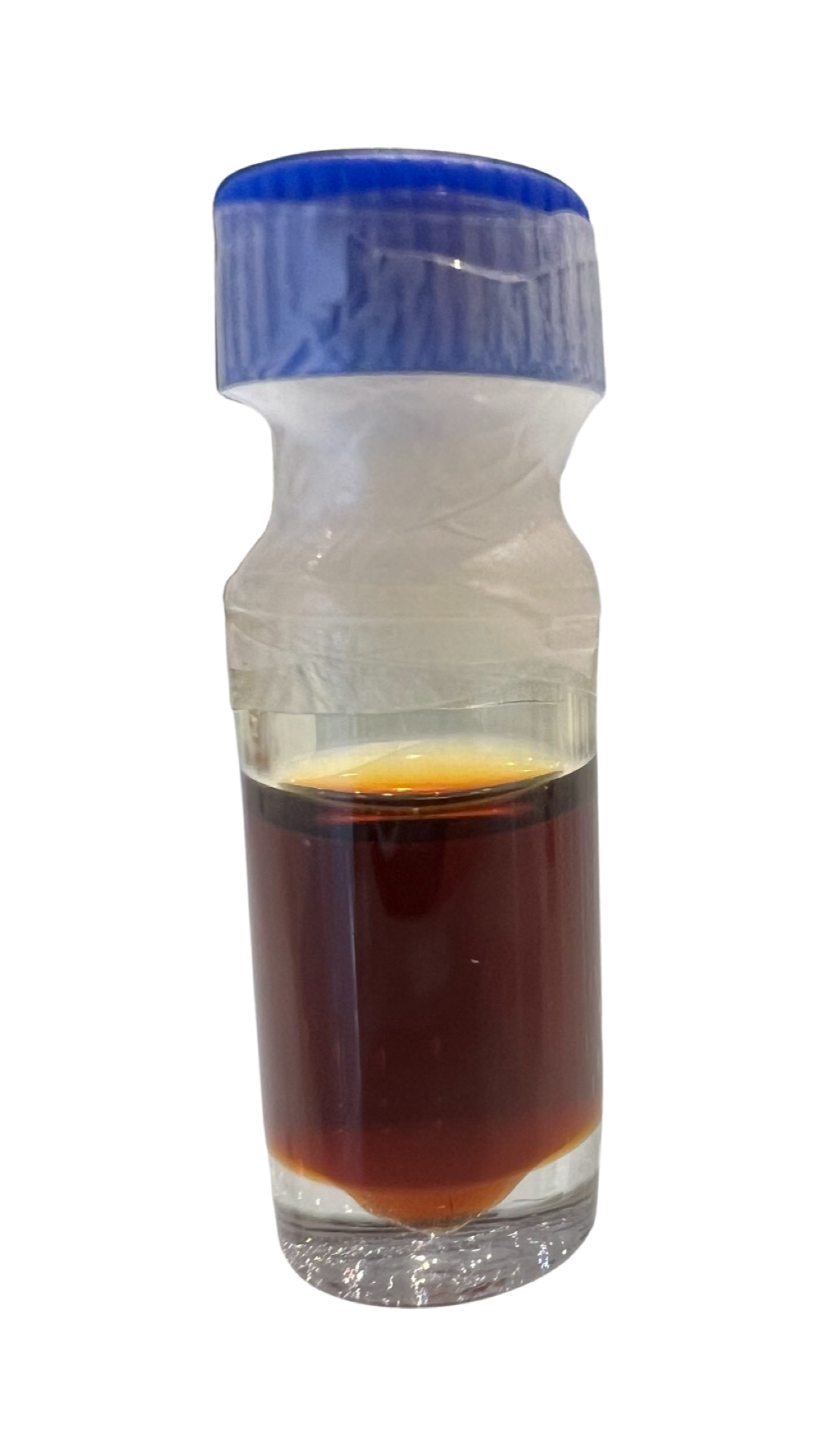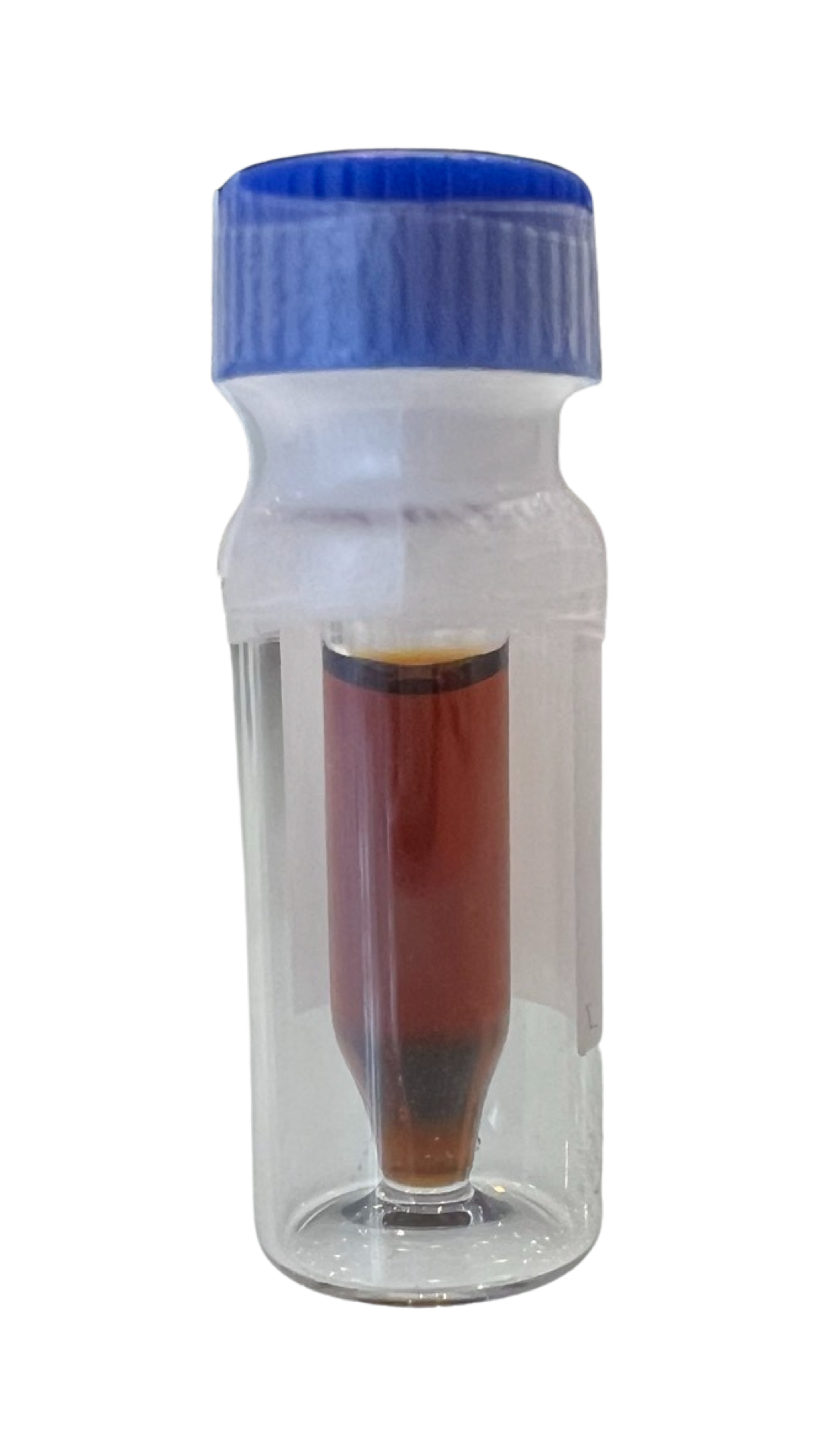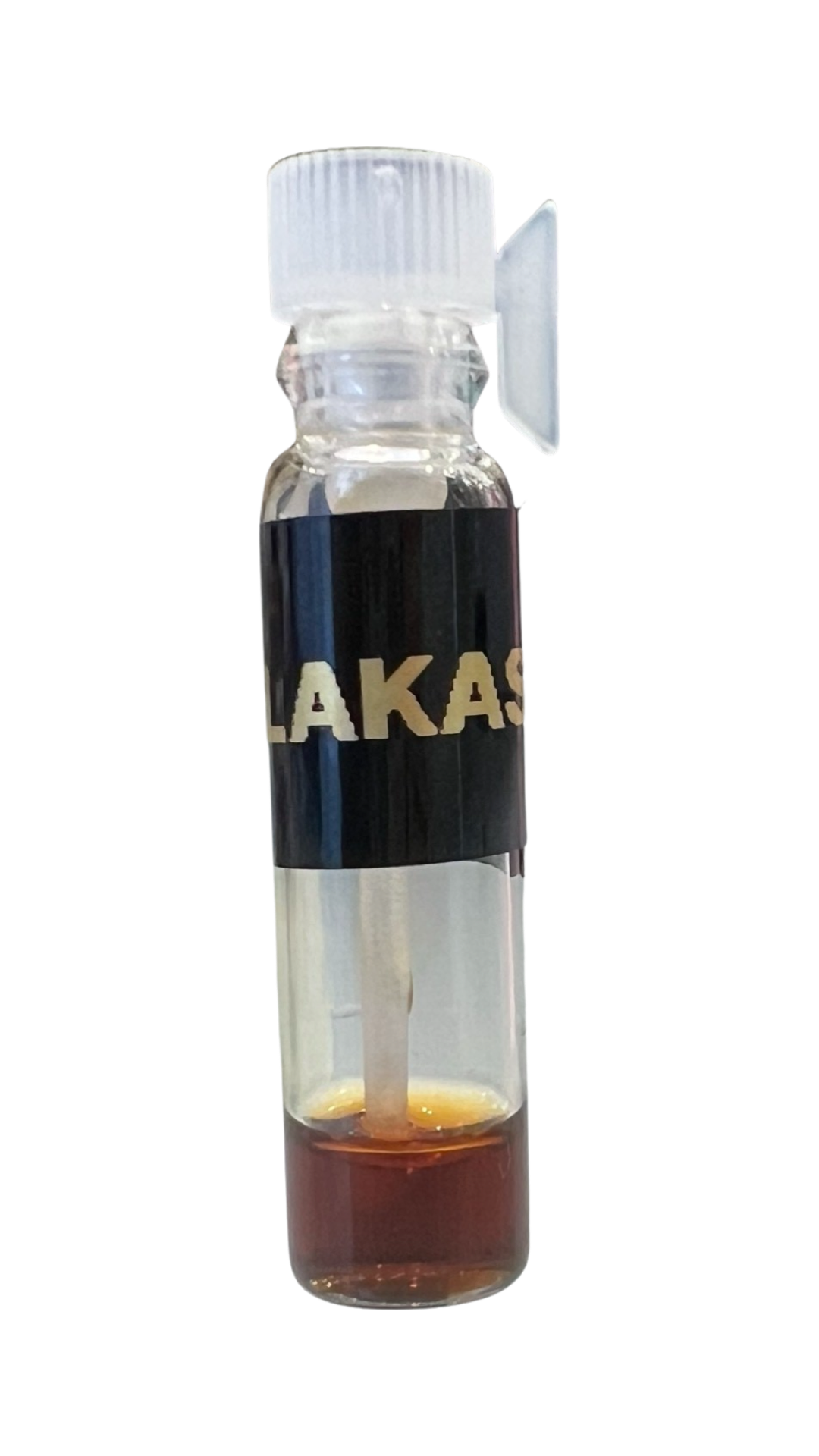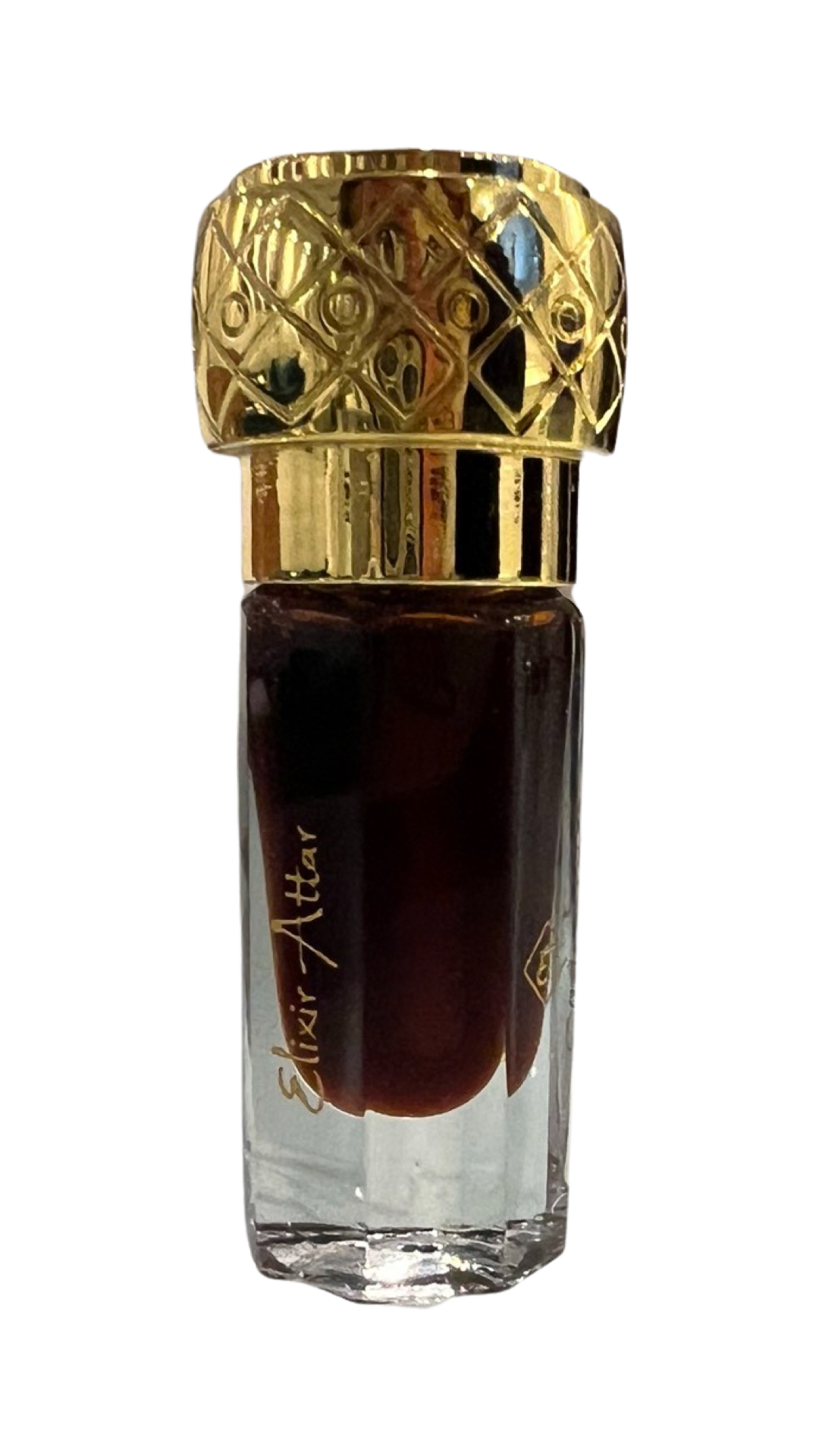Elixir Attar Agarwood Science
1985 Indian Sultani Oil (Kalakassi Sultani)- Sultan Qaboos Super Premium
1985 Indian Sultani Oil (Kalakassi Sultani)- Sultan Qaboos Super Premium
Couldn't load pickup availability
This is our Sultani Indian 1985 oil, acquired directly from the vault of late Sultan Qaboos, through our Omani connections. Needless to say that over the years we have supplied through Elixir Attar a lot of these Indian Sultani oils after rigorous scrutiny and our customers were always very satisfied with what they got. We only offered and continue to offer the best of what we source.
Year of Distillation : 1985
Scent Profile/ Appearance:
This is a relatively viscous black oil with darker color, the opening notes are woody, warm, and smooth suede. Tobacco, and tamarind smell unfolds as the hay/prunes leather smell starts to appear, becoming more intense as time passes, the leather is accompanied by a slight animalic white oud note that is the very marker of old Arabian mukhallats. This oil has 15+ hours of longevity on the skin, multiple days on clothes.
Vintage Indian agarwood oils, also known as or are renowned for their deep, rich, and multifaceted scent profile. Aged over time, these oils develop an extraordinary complexity and depth. The key characteristics include:
1. **Dark, Woody Base**: The foundation is a deep, earthy woodiness, often described as dense, smoky, and resinous. It has a powerful, grounding presence.
2. **Sweet and Balsamic**: Over time, the oil matures to reveal a rich, sweet, almost honeyed or caramelized aspect that balances the darker notes. This sweetness is smooth, never cloying, and has a balsamic, almost syrupy quality.
3. **Animalic and Leather**: There is often a bold, animalic facet, which can include notes reminiscent of leather, musk, or civet. This adds a raw, primal edge to the scent, making it highly distinctive.
4. **Smoky and Incense-like**: Vintage Indian agarwood oils carry a prominent smoky character, evoking the scent of high-quality incense. This smokiness is soft and soothing, not harsh or acrid.
5. **Earthy and Spicy**: Alongside the woodiness, there may be earthy, mossy undertones with a hint of spices like clove or cinnamon, which contribute to the complexity and warmth.
6. **Long-lasting and Evolving**: The scent of vintage Indian agarwood oils evolves over time on the skin, revealing new layers of sweetness, smokiness, and woodiness, with exceptional longevity.
Scent Progression
1-2-5-4-3
1. Dark, Woody Base ███████ (High)
2. Sweet and Balsamic ███ (Low)
5. Earthy and Spicy █████ (Moderate)
4. Smoky and Incense-like ███████ (High)
3. Animalic and Leather ██████████ (Very High)
6. Long-lasting and Evolving ██████████ (Very High)
Overall, the scent of vintage Indian agarwood oils is incredibly luxurious, dense, and complex, combining deep woody and smoky notes with a sweet, balsamic richness and animalic undertones. The aging process enhances these aspects, making it a prized material in perfumery.
The Wood:
Indian Sultani oils rarely come from one source in India as opposed to the modern Indian distillations that may come from a certain forest having a more linear scent profile that is region specific like Assamese or Nagalandese, etc. This oil is no exception, you will get an oil that is a result of a fusion of a melange of very high grade incense grade Indian woods cooked traditionally over fire in the 1980s.
Because we are speaking scientifically, we can tell that there is no way to tell exactly the ratios of each region-specific wood used, there are however two tools available for agarwood experienced perfumers to tell roughly the ratios as well as the quality of woods based on the scent generated when test-smelling and from our study of this oil, we can say it has equal ratios since the scent does not lean toward one region or the other, the quality of the wood is also evident from the scent, which is another tool that we enable us to forensically tell based on the scent generated the grade of woods, certain markers hit the scent generated from incense grade and perhaps sinking grade, but because we are prudent we say that it has incense grade which is a very resin-rich grade of wood that is not just wild, but old wild.
Indians and Arabs used to refer to these oils as Kalakassi, specially when the woods have been cut from old and highly resinated trees.
The Cook:
During the 1980s and earlier, most oud cooking was done traditionally except for some sporadic events within science labs and when some Taiwanese agarwood traders who had had more experiences with distillation in general leaned more toward region specific and lower temperature as well as shorter soak time before distillation, with mostly experimental cooks yielding a few milliliters at a time
The cook for this oil is more traditional, soak time is medium. We can tell the soak time based on the amount of butyric molecules (cheesiness) there is. Longer soak time definitely increased the yield of the oil but also contributed to extracting more of the “white wood” or boya smell in the oil, it is present mildly in this oil, hence our deduction for the soaking method, lower temperature was used because of the total absence of any “burn” notes that are a result of the partial burning of the oil when overheated during distillation.
The Cost:
This oil, if distilled today from the same grade of woods maybe a bit distilled in a more advanced way, but make no mistake, eitherway it would be multiple times more expensive. Added to that the wonderful effect of ageing, which anyone with the finer taste in things knows is irreplaceable no matter what you do to a modern oil. Ageing is not simple about finding a right chemical formula, it is also about how are brains are wired to smell the interactions as they age altogether- the old or ancient effect, we cannot do it to essential oils, and surely cannot do it to agarwood oils.
Who is this oil recommended for?
Experienced agarwood users who wish to try a complete oil from past times bygone. Ouds that were very rich and were made with woods that are very difficult to find now, let alone distill.
Share










